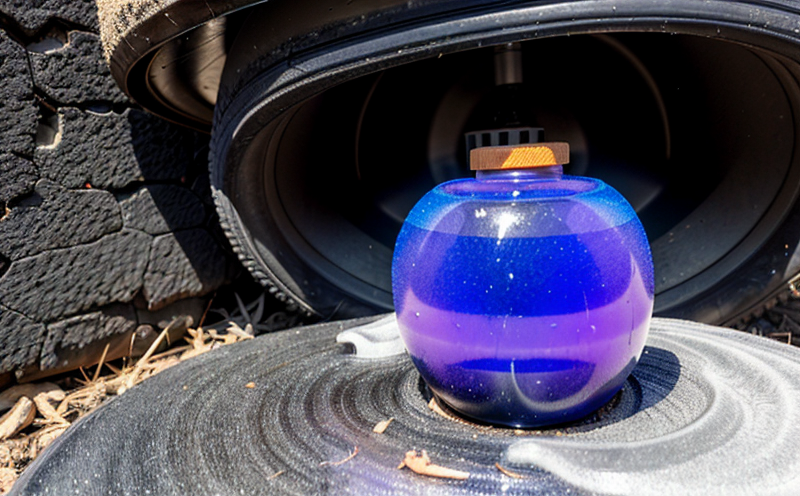Testing the impact of ozone exposure on rubber, plastics, and other vulnerable materials
The Hidden Dangers of Ozone Protecting Your Materials with Eurolabs Expert Testing Services
In todays fast-paced industrial landscape, businesses are constantly seeking ways to improve their products and processes while minimizing risks. One often-overlooked threat to material durability is ozone exposure a silent saboteur that can wreak havoc on rubber, plastics, and other vulnerable materials. Unchecked, ozone damage can lead to product failure, costly recalls, and compromised customer satisfaction. This is where Eurolabs specialized testing services come in providing businesses with the critical insights needed to safeguard their products against the damaging effects of ozone exposure.
The Risks of Ozone Exposure Why Testing is Essential
Ozone (O3) is a powerful oxidizing agent that can penetrate and degrade materials, leading to significant reductions in their lifespan. When exposed to ozone-rich environments common in industries such as automotive, aerospace, and electronics rubber, plastics, and other polymers are particularly susceptible to damage. The consequences of unchecked ozone exposure can be severe
Reduced material lifespan Ozone degradation accelerates the aging process, causing materials to break down prematurely.
Increased risk of product failure Damaged materials compromise product integrity, leading to a higher likelihood of malfunction or complete failure.
Costly recalls and reputational damage Product failures can result in costly recalls, damaged brand reputation, and financial losses.
Why Choose Eurolabs Testing Services?
Our comprehensive testing services are specifically designed to help businesses mitigate the risks associated with ozone exposure. By partnering with Eurolab, youll gain access to
Accurate risk assessment Our expert team conducts thorough evaluations of your materials susceptibility to ozone damage.
Customized testing protocols We develop tailored testing plans to simulate real-world ozone exposure scenarios.
Data-driven insights Receive actionable recommendations for material selection, formulation optimization, and process improvements.
Key Benefits of Testing the Impact of Ozone Exposure on Materials
Eurolabs testing services offer a wide range of benefits, including
Enhanced product reliability By identifying potential ozone-related vulnerabilities, you can develop more robust products that meet customer expectations.
Increased cost savings Minimize recalls and warranty claims by proactively addressing material degradation.
Competitive edge Stay ahead of industry competitors by demonstrating a commitment to quality and materials science expertise.
What Sets Eurolab Apart?
At Eurolab, we pride ourselves on our
State-of-the-art facilities Our laboratory is equipped with cutting-edge equipment and technology to ensure accurate and reliable results.
Expertise in materials science Our team consists of experienced scientists and engineers who possess a deep understanding of material properties and behavior under ozone exposure.
Commitment to customer satisfaction We work closely with clients to ensure that our testing services meet their unique needs and expectations.
Frequently Asked Questions (FAQs)
Q What types of materials can be tested for ozone exposure?
A Our services cover a wide range of materials, including rubber, plastics, elastomers, coatings, adhesives, and other polymers.
Q How long does the testing process typically take?
A The duration of our testing services varies depending on the complexity of the project. However, we strive to provide timely results within 2-4 weeks.
Q Can I request a customized testing protocol for my specific material or product?
A Absolutely! Our expert team will work with you to develop a tailored testing plan that meets your unique needs and requirements.
Conclusion
In todays fast-paced industrial landscape, ozone exposure poses a significant threat to material durability. By partnering with Eurolab, businesses can safeguard their products against the damaging effects of ozone exposure and maintain a competitive edge in the market. Dont wait until its too late protect your materials and your bottom line with our expert testing services.
Get Started Today
Take the first step towards ensuring the reliability and longevity of your products by contacting Eurolab today. Our dedicated team is ready to provide you with the critical insights needed to navigate the complex world of ozone exposure and material degradation.
-
Testing the ability of materials to withstand prolonged exposure to environmental elements
-
Simulating long-term exposure to UV light, rain, wind, and temperature fluctuations
-
Evaluating how building materials such as paints, coatings, and sealants hold up under harsh weather
-
Testing for color fading, material cracking, or degradation caused by environmental exposure
-
Ensuring that materials maintain their structural integrity and appearance over time
-
Simulating extreme weather conditions to test how materials react to rapid changes in climate
-
Verifying the durability of construction materials in areas prone to extreme weather patterns
-
Ensuring that exterior materials, including roofing and cladding, remain stable under exposure to the sun
-
Testing the ability of materials to resist the effects of saltwater and humidity in coastal regions
-
Verifying that materials used for outdoor applications are resistant to UV degradation and weathering
-
Simulating the effects of freeze-thaw cycles on construction materials and coatings
-
Evaluating the impact of pollutants in the air on materials used in urban environments
-
Testing how materials respond to repeated exposure to high temperatures and cold snaps
-
Verifying that materials used in construction do not lose their mechanical strength over time
-
Ensuring that weathered materials retain their original properties and do not compromise building safety
-
Simulating rain, snow, and high winds to determine how materials respond to these forces
-
Testing for the resistance of materials to discoloration or surface damage after extended weather exposure
-
Ensuring that materials used in building envelopes continue to perform in harsh weather without failure
-
Evaluating the protection provided by weather-resistant coatings in long-term outdoor environments
-
Testing for resistance to ice formation and the potential for materials to crack or deform
-
Ensuring that materials are capable of withstanding the test of time in outdoor, high-traffic environments




